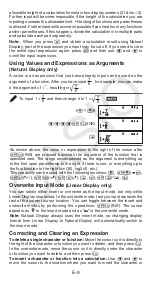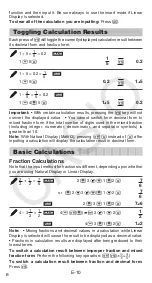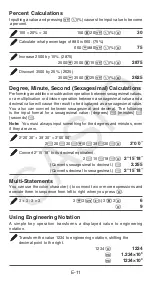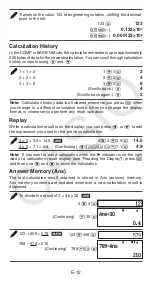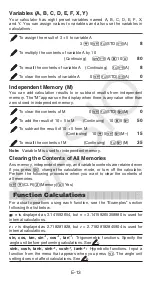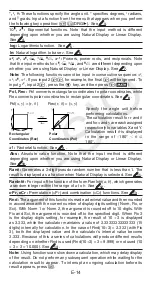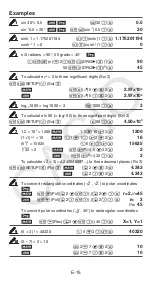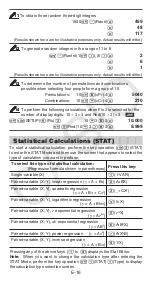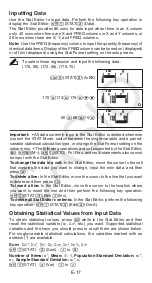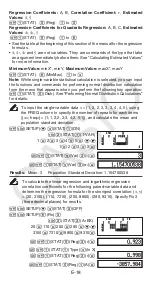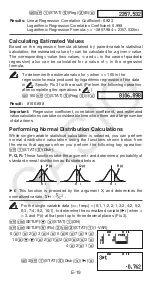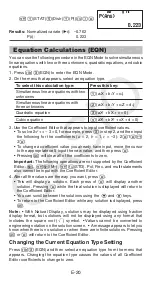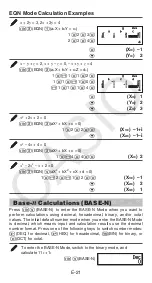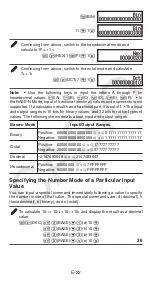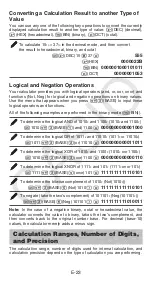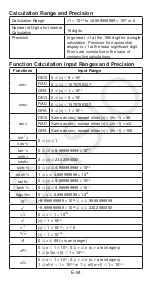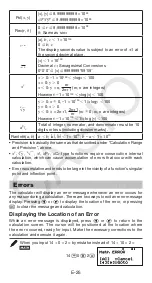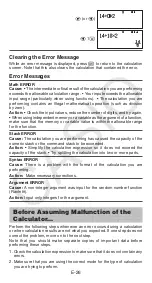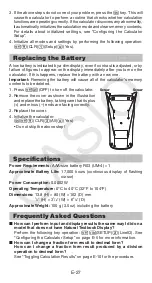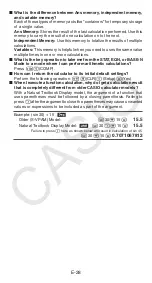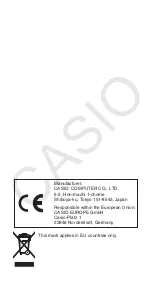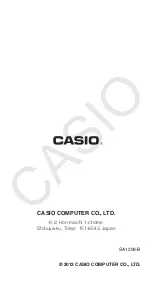
E-23
Converting a Calculation Result to another Type of
Value
You can use any one of the following key operations to convert the currently
displayed calculation result to another type of value:
x
(DEC) (decimal),
6
(HEX) (hexadecimal),
l
(BIN) (binary),
i
(OCT) (octal).
To calculate 15
10
×
37
10
in the decimal mode, and then convert
the result to hexadecimal, binary, and octal
A
x
(DEC) 15
*
37
=
555
6
(HEX)
0000022B
l
(BIN)
0000001000101011
i
(OCT)
00000001053
Logical and Negation Operations
Your calculator provides you with logical operators (and, or, xor, xnor) and
functions (Not, Neg) for logical and negation operations on binary values.
Use the menu that appears when you press
1
3
(BASE) to input these
logical operators and functions.
All of the following examples are performed in the binary mode (
l
(BIN)).
To determine the logical AND of 1010
2
and 1100
2
(1010
2
and 1100
2
)
A
1010
1
3
(BASE)
1
(and) 1100
=
0000000000001000
To determine the logical OR of 1011
2
and 11010
2
(1011
2
or 11010
2
)
A
1011
1
3
(BASE)
2
(or) 11010
=
0000000000011011
To determine the logical XOR of 1010
2
and 1100
2
(1010
2
xor 1100
2
)
A
1010
1
3
(BASE)
3
(xor) 1100
=
0000000000000110
To determine the logical XNOR of 1111
2
and 101
2
(1111
2
xnor 101
2
)
A
1111
1
3
(BASE)
4
(xnor) 101
=
1111111111110101
To determine the bitwise complement of 1010
2
(Not(1010
2
))
A1
3
(BASE)
5
(Not) 1010
)=
1111111111110101
To negate (take the two’s complement) of 101101
2
(Neg(101101
2
))
A1
3
(BASE)
6
(Neg) 101101
)=
1111111111010011
Note:
In the case of a negative binary, octal or hexadecimal value, the
calculator converts the value to binary, takes the two’s complement, and
then converts back to the original number base. For decimal (base-10)
values, the calculator merely adds a minus sign.
Calculation Ranges, Number of Digits,
and Precision
The calculation range, number of digits used for internal calculation, and
calculation precision depend on the type of calculation you are performing.

